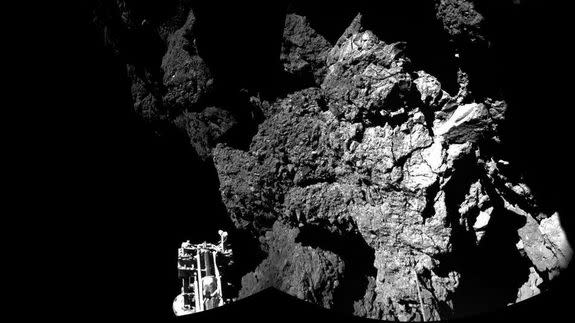Say farewell to the Philae comet lander using #GoodbyePhilae

On Wednesday, Europe's Philae lander will come to the official end of its long goodbye from the surface of its comet speeding toward the distant reaches of our solar system.
The Rosetta orbiter — circling Comet 67P — will stop listening out for Philae on the comet's surface on Wednesday, when mission controllers turn off Rosetta's instrument designed to receive a signal if Philae attempts to phone home.
SEE ALSO: The basic ingredients for life have been found in a comet's atmosphere
"No signal has been received by Rosetta from Philae since last July and earlier this year the lander was considered to be in a state of eternal hibernation," the European Space Agency said in a blog post.
Space fans are now sending their best wishes to Philae — which became the first spacecraft to soft-land on comet in 2014 — using #GoodbyePhilae on Twitter.
The German Aerospace Center is asking people to use the hashtag to send "postcards" to Philae via social media.
Philae's mission was somewhat fraught from the start.
The lander bounced a few times when it first landed on Comet 67P, forcing it to set down on an unexpected part and making it very difficult for scientists to communicate with the far-flung spacecraft.
Philae did send back hours worth of data from the surface of Comet 67P including photos of its landing spot, though scientists could never figure out exactly where Philae ended up.
Philae and Rosetta have transformed the way scientists understand comets in our solar system. Rosetta sniffed out organics in Comet 67P's atmosphere and characterized the water in the comet.
Comet 67P is now more than 321,000,000 miles from the sun.
Rosetta is still sending back a lot of science from its post orbiting Comet 67P. The spacecraft is set to function until the end of September, when the comet will be too far from the sun for Rosetta to function.
The orbiter will join Philae for their "eternal hibernation" on the surface of the comet together once its mission comes to an end.
